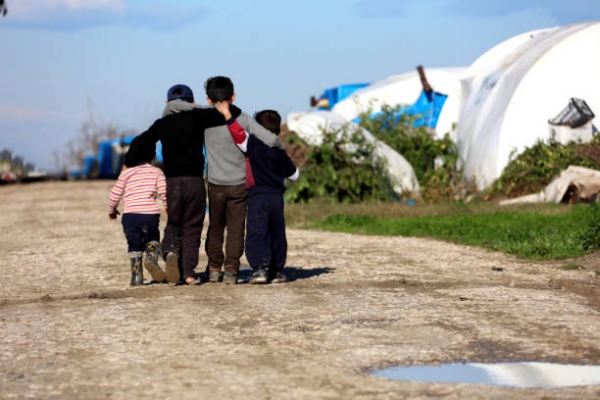Based in Geneva, Switzerland, the Internal Displacement Monitoring Centre (IDMC) is a leading source of data and analysis on internal displacement. The organization was established in 1998 as part of the Norwegian Refugee Council (NRC), which is an independent humanitarian organization that helps and advocates for displaced people. IDMC strives to provide high-quality data, analysis and expertise on internal displacement with the goal of eliminating future displacement and improving the circumstances of internally displaced people (IDP) worldwide. The organization’s work informs policy and operational decisions regarding IDP around the world. This report was written by Vicente Anzellini, Juliette Benet, Ivana Hajžmanová and Clémence Leduc with contributions from several others.
In 2010, a wave of anti-government protests and uprisings against corruption, unemployment, police repression and inequality took place throughout the Middle East and North Africa (MENA), known as the Arab Spring. The Arab Spring initiated a significant shift in conflict and displacement patterns in the MENA region, as there has been a marked increase in internal displacement since 2010. A decade later, many of these nations are facing varying kinds of turmoil, and some have been plagued by years of conflict that have “driven a humanitarian crisis characterised by high levels of internal displacement and refugee flows.” Additionally, the MENA region is predisposed to natural disasters such as floods, storms, and severe winter conditions, which “continually push people into secondary displacement, exacerbating their vulnerabilities and trapping them in poverty.” Many of these states are inadequately equipped to prepare and respond to these incidents, as long periods of violence have inflicted damage on its infrastructure.
While each state faces a distinctive set of circumstances that account for its rates of displacement, there are a few key factors that have collectively caused people to flee. Foreign interventions, urban warfare, ethnic, tribal and religious affiliations, and extremism are the leading causes of displacement in the MENA region. According to the report, approximately 12.4 million people were “living in internal displacement as a result of conflict and violence across the region at the end of 2019, making it the second most affected region globally after sub-Saharan Africa.” Today, MENA’s IDPs account for approximately 30 percent of the world’s total, with most residing in Syria, Iraq, Yemen and Libya. Syria contains the highest number of IDPs in the world, with roughly 6.5 million in the country. Iraq has experienced a steady decline in IDPs over the past few years, from having 3.3 million in 2015, to 1.6 million in 2019. New displacements in Iraq decreased significantly as well, from 1.4 million in 2017 to 104,000 in 2019. This improvement in displacement trends in Iraq is a result of receding conflict. In contrast, Yemen witnessed a record number of IDPs in 2019, with 3.6 million displaced individuals, which is nearly 12% of the country’s population. Libya has shown varying levels of displacement between 2010 and 2019, due to violence waged by different actors and two unsuccessful UN peace processes.
In order to reverse the displacement trends in the region, IDMC suggests that the solution begins with a more in-depth understanding of displacement. The authors emphasize the importance of measuring the social and economic impacts of displacement as well as the duration of displacement, as many IDPs flee multiple times in their lives. Furthermore, in the case of the MENA region, both conflict and natural disasters contribute to displacement, and there is substantial evidence that they are intertwined. In order to effectively solve these issues, states and institutions should pursue joint initiatives to combat environmental issues and armed conflict, rather than addressing them separately. Lastly, each state with a displaced population must make a political commitment to addressing displacement and eliminating conflict and disaster risk by implementing policies that comprehensively confront these joint issues.
To know more, please read:
www.internal-displacement.org/sites/default/files/publications/documents/IDMC_MenaReport_final.pdf
Author: Sitara Sandhu; Editor: Gabriella Pavlakis




